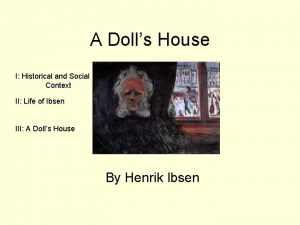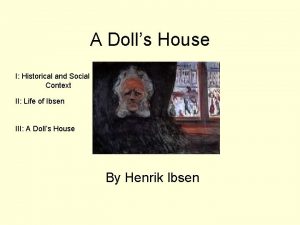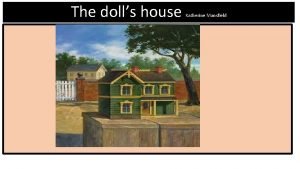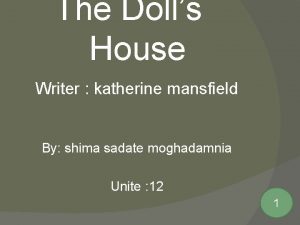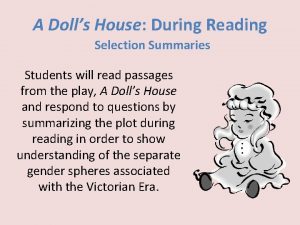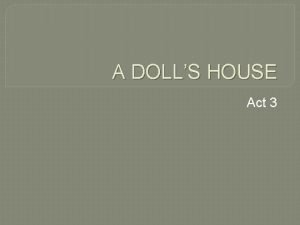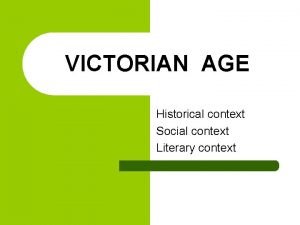Historical and SocioPolitical Context A Dolls House Streetcar
















- Slides: 16

Historical and Socio-Political Context


A Doll’s House Streetcar Named Desire 00 5 , 7 km

A Doll’s House A Streetcar Named Desire 69 years

§ 1879 – Doll’s House published § 1880 – Doll’s House first performed § 1906 – Henrik Ibsen dies § 1911 – Tennessee Williams born § 1914 -19 – WW 1 § 1929 -1939 – Wall Street Crash and Great Depression § 1939 -1945 – WW 2 § 1947 – Streetcar first performed

§ There are thematic similarities between the plays § The playwrights, characters and audiences are dealing with universal issues which we are still grappling with today. § You are BANNED from writing: The position audience of all ofwomen both People at the time… plays… was …


Broadly speaking, embodied by Torvald and Nora in the play’s opening: § Financial success, § Upward social mobility, § Freedom from debt and moral guilt, § A stable secure family organised along traditional patriarchal lines

§ Women had little power; § They were dependent on men and § The institutions of marriage and motherhood

§Women had no democratic vote

§ Women had little economic power; § They couldn’t borrow money, inherit or own property; § Middle class women wouldn’t usually work; § Different standards applied to the working class

Social, political and economic norms were being challenged: § Norway’s ‘first wave of feminism’ began in 1879 § Demands for women’s suffrage, § Revised marriage laws, § Advances in women’s education.

Because patriarchy was the basis of the social, political and economic society, a challenge to patriarchy meant reimagining the whole of Norwegian society, which was horrifying to the middle classes. Feminism was also regarded as intimately connected to highly emotive structures like family and motherhood.

§ Ibsen’s play, then, addresses the sense of challenge and change; it was written and received from a position of simultaneous excitement and fear. § A Doll’s House takes a middle-class housewife as its hero and questions both the importance, and tyranny, of wealth, and turn-of-thecentury marriage norms. § The play has less shock-value today, but in the late-nineteenth century, performing it was often, as one critic puts it, "a revolutionary action, a daring defiance of the cultural norms of the time. "

§ Consider how conservative middle class values are depicted in the play’s opening. Focus from “My new salary doesn’t start until April” to “Someone’s coming. What a bore” (24 -28) § Explore the subtext to identify the potential tensions underlying the appearance of bourgeois respectability in the Helmer household.

 Streetcar named desire context
Streetcar named desire context A doll's house context
A doll's house context A dolls house context
A dolls house context What is the theme of the doll house by katherine mansfield
What is the theme of the doll house by katherine mansfield Symbolism in a doll's house act 1
Symbolism in a doll's house act 1 Realism a doll's house
Realism a doll's house The dolls house by katherine mansfield moral lesson
The dolls house by katherine mansfield moral lesson Pen name of the author of the doll's house
Pen name of the author of the doll's house What does the dolls house symbolize in the selection
What does the dolls house symbolize in the selection A doll's house act 3 summary
A doll's house act 3 summary What is the sweet that nora is forbidden to eat
What is the sweet that nora is forbidden to eat A doll's house short summary
A doll's house short summary Romeo and juliet historical context
Romeo and juliet historical context Historical background of pride and prejudice
Historical background of pride and prejudice Context jekyll and hyde
Context jekyll and hyde Sir gawain and the green knight medieval romance
Sir gawain and the green knight medieval romance What makes something historically significant
What makes something historically significant

